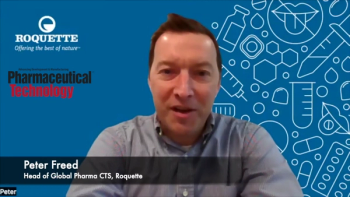
- Pharmaceutical Technology-02-01-2016
- Volume 2016 Supplement
- Issue 1
Lab Services: To Outsource or Not to Outsource
As virtual pharmaceutical companies become more prevalent, so has the outsourcing of laboratory and analytical services. In the heyday of the blockbuster drug, pharmaceutical companies had extensive inhouse laboratories to handle analytical testing for quality and R&D. Today, as more facilities are shut down and staffing cut, many companies are saving the investment in equipment and staffing by outsourcing their analytical testing needs.
Pharmaceutical Technology interviewed Keith Moore, vice-president of analytical services at Metrics Contract Services, to get an idea of business and technology trends.
Different approaches for different problemsPharmTech: What types of analytical operations make the most sense for a pharmaceutical or biopharmaceutical company to outsource?
Moore: It depends on the company and its business model. For virtual pharma companies--whose numbers are on the rise--it makes sense to outsource almost all operations that support a given product’s development to potential commercialization. Traditional pharma companies have more internal capabilities, so they tend to outsource for specific cost, speed, or quality considerations.
Whether or not to outsource also depends on whether work is related to cGMPs or is non-cGMP; cGMP projects tend to be outsourced because of the effort and overhead associated with compliance requirements.
Stability management and testing, which usually involves the use of high performance and ultra high-pressure liquid chromatography (HPLC/UHPLC) assays, related substances, dissolution, and moisture testing, are commonly outsourced. Method development is also being outsourced, and working with contract partners is also helping some pharmaceutical companies to improve the way they handle existing testing processes.
In addition, highly specialized analytical operations that require costly equipment are also increasingly being outsourced. Examples include solid-state chemistry, specialized techniques that can include tools such as mass spectrometry, X-ray powder diffraction (XRPD), nuclear magnetic resonance (NMR), and near-infrared spectroscopy (NIR). These techniques demand experienced users who can interpret data accurately. In addition, some of the equipment is expensive to use and maintain.
PharmTech: Are most analytical services companies working under subcontract to contract development and manufacturing organizations (CDMOs) and contract manufacturing organizations (CMOs), or by contract with pharma companies?
Moore: Metrics Contract Services, a division of Mayne Pharma, is a CDMO. While we do perform testing for other CDMOs, most of our contract work is for pharma and biopharm companies directly. It’s been our experience that pharma companies that consistently outsource want a one-stop solution for this scope of work.
PharmTech: Are there situations in which each approach makes more sense?
Moore: There are situations in which subcontracting makes sense, such as when a client requires services that can’t be found under one roof.
An example would be specialized testing involving the use of NMR spectroscopy. Such techniques require knowledgeable staff and expensive equipment.
Dissolution testing becomes more importantPharmTech: Please comment on analytical methods available today. Which are becoming most important? Are any ‘workhorse’ methods being used in place of more expensive practices?
Moore: The majority of analytical methods available are the traditional HPLC assay and related substance procedures, dissolution testing by either HPLC or UV, and Karl Fischer testing procedures. Use of these traditional methods is expected by most global regulatory agencies, and the level of scrutiny on these procedures increases with each phase of drug development.
Demand for charged aerosal detection (CAD) appears to be growing over other detection modes for which UV cannot be utilized, because CAD offers an easier, more affordable solution. There are other techniques for qualitative and quantitative measurements of polymorphs that can be used in-situ instead of XRPD. In certain instances, differential scanning calorimeter (DSC), Fourier transform infrared spectroscopy (FTIR), and Raman spectroscopy can be used to evaluate polymorphism, and these techniques can also be used for control purposes. XRPD is still a powerful tool, but there are other options and opportunities to determine polymorphic changes.
PharmTech: Please comment on data retrieval and analysis practices today. How are they different from standard practices five years ago?
Moore: Data retrieval has advanced, thanks to improved automated systems that allow for a much faster throughput. Many companies offer solutions that streamline the movement of data by linking to other independent systems and automating the process of data dissemination.
PharmTech: FDA recently published quality metrics for contract services companies. What do you think of the draft guidance? Are there issues that need to be clarified?
Moore: The FDA’s draft is well written and offers proper justification of the new quality metrics. FDA is adopting a more risk-based approach to inspections in place of its prior process of having inspections every two years regardless of a company’s status.
Reporting windows and requests should be further clarified, however. Currently, companies provide a lot of information in annual reports; I believe metrics could be included in those submissions, which occur annually from product approval. This would suggest that the CDMOs reporting would submit their quality metrics directly to the sponsor, who would then include the required metrics in the submission-- product-specific instead of site-specific.
I also believe that communication of metrics without review of commentary could prove challenging. The draft suggests that commentary might not be reviewed, and instead that the focus will be on certain acceptance limits for assigned metrics, which could lead to incorrect conclusions.
Organizations should have an opportunity to explain or justify when certain quality metrics are not representative, instead of FDA considering values alone to determine whether an organization, or product, should be placed on a high-risk list. Generally, these are common metrics that most organizations collect already to monitor quality performance.
Overall, the draft guidance is a good step in the right direction. Additional revisions and updates are currently in process, as FDA evaluates comments from the industry.
PharmTech: How do you handle communication with clients? Are your IT systems connected to theirs in any cases?
Moore: Communication mostly takes place in weekly or bi-weekly teleconferences; we rely upon web-based conference tools and have videoconference capabilities. We use share sites to update documents for certain clients as well. Our IT systems are not currently directly connected to any clients’ proprietary networks.
Trends in data analysis and accessPharmTech: Please comment on trends in analytical instruments, data analysis, and data retrieval. Are technologies becoming better and easier to use? Any criticisms?
Moore: I have not seen a significant breakthrough in analytical instrumentation technology in quite some time that has generated a revolutionary change for routine analysis. While UHPLC offers many advantages, the dominance of HPLC continues. Many companies are reluctant to spend time and money to convert methods from HPLC to UHPLC-as well as taking the time needed to update their regulatory submissions. Use of CAD is growing significantly and much faster than use of evaporating light scattering detector. Other than use of flow-through cell apparatus for dissolution testing (USP Apparatus IV), I am still waiting for another breakthrough in dissolution technology that provides a much better means of predicting in-vivo performance. Traditional apparatus are still being used in in the hope of making that correlation between in-vivo and in-vitro using simulated fluids.
Regarding data analysis and data retrieval, technology has greatly improved, thanks to the flexibility of ‘talking’ with different systems, whether electronic notebooks or sophisticated laboratory information management system. Additional improvements in these systems promise to make the laboratory operation functions faster and more compliant.
Article DetailsPartnerships in Outsourcing Supplement
Vol. 40, No. 13
Pages: 14–18
Citation:
When referring to this article, please cite it as A. Shanley, “Lab Services: To Outsource or Not to Outsource," Pharmaceutical Technology Partnerships in Outsourcing Supplement 40 (13) 2016.
Articles in this issue
almost 10 years ago
Success Story: Transferring a Phytochemical API Portfolioalmost 10 years ago
The Impact of SEND on the Pharmaceutical Industryalmost 10 years ago
Under New Ownership: Consolidation Reshapes Contract Services Marketalmost 10 years ago
Quality Metrics and Best Practices for Working with Contract Labsalmost 10 years ago
Keeping It Simple: Collaborating for Success in Drug Deliveryalmost 10 years ago
Preventing Phase III Failuresalmost 10 years ago
Surveys Examine Outsourcing Trendalmost 10 years ago
Emerging Life-Sciences Markets: New Partnerships, New Competitorsalmost 10 years ago
UV Spectroscopy Gains Use in Dissolution Testingalmost 10 years ago
Pharmaceutical Technology, 2016 Partnerships in Outsourcing Supplement (PDF)Newsletter
Get the essential updates shaping the future of pharma manufacturing and compliance—subscribe today to Pharmaceutical Technology and never miss a breakthrough.





